Abstract
Four pigeons were exposed to a series of multiple schedules of variable-interval reinforcement in which pecks were required on one key (operant key) and components were signalled on a second key (signal key). Four additional pigeons experienced identical conditions, except that a yoking procedure delivered food on variable-time schedules, with no key pecks required. One of the components of the multiple schedule was constant throughout the experiment as a variable-interval (or variable-time) 30-second schedule. Operant-key responding during the constant component was uniform throughout the component, uninfluenced by changes in the duration of the variable component, and only slightly influenced by changes in reinforcement frequency correlated with the variable component. By comparison, signal-key response rate during the constant component was highest at the onset of the component, was higher when the variable component was 60-sec long than when it was 1-sec long, and was higher when no reinforcement occurred in the variable component than when reinforcement was scheduled in the variable component. These characteristics of signal-key pecking matched characteristics of local positive behavioral contrast. These data are taken to support the “additivity theory” of behavioral contrast and to suggest that Pavlovian stimulus-reinforcer relations contribute primarily to the phenomenon of local positive contrast.
Keywords: behavioral contrast, local contrast, additivity theory, stimulus-reinforcer relations, multiple schedules, key pecking, pigeons
Full text
PDF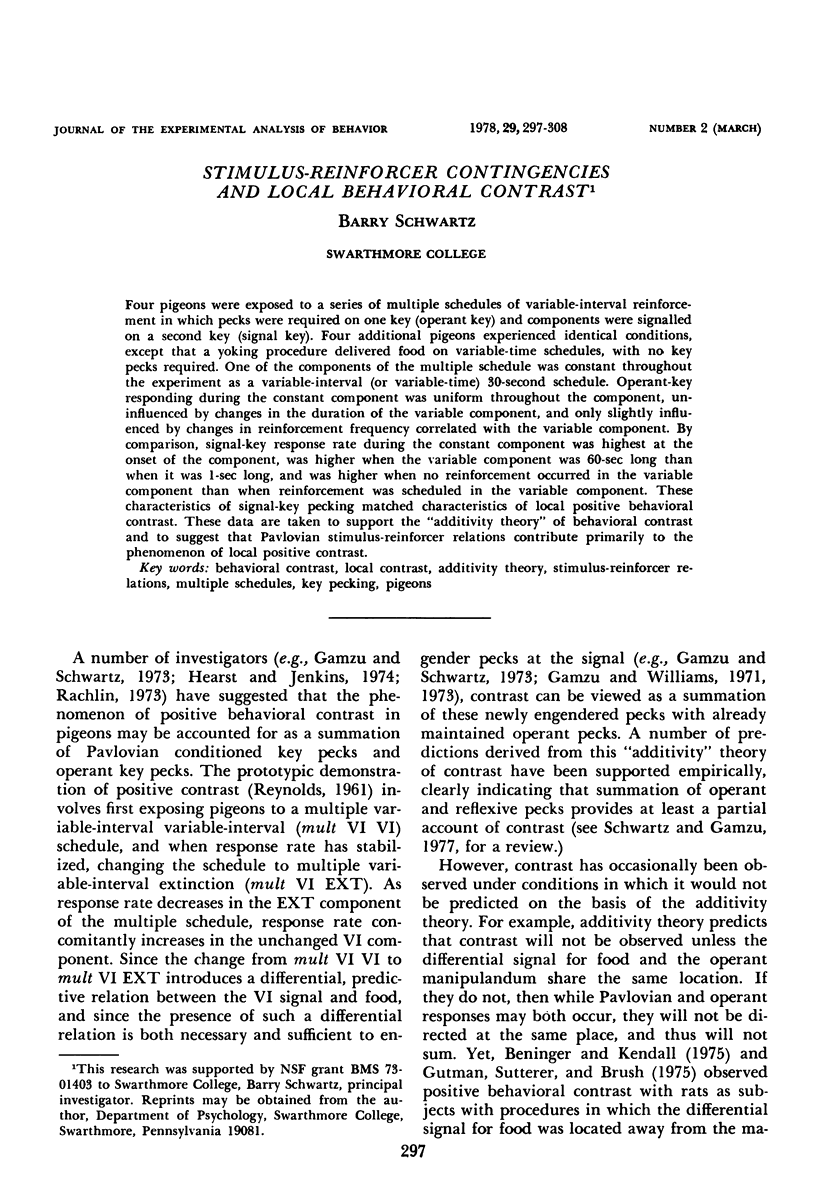
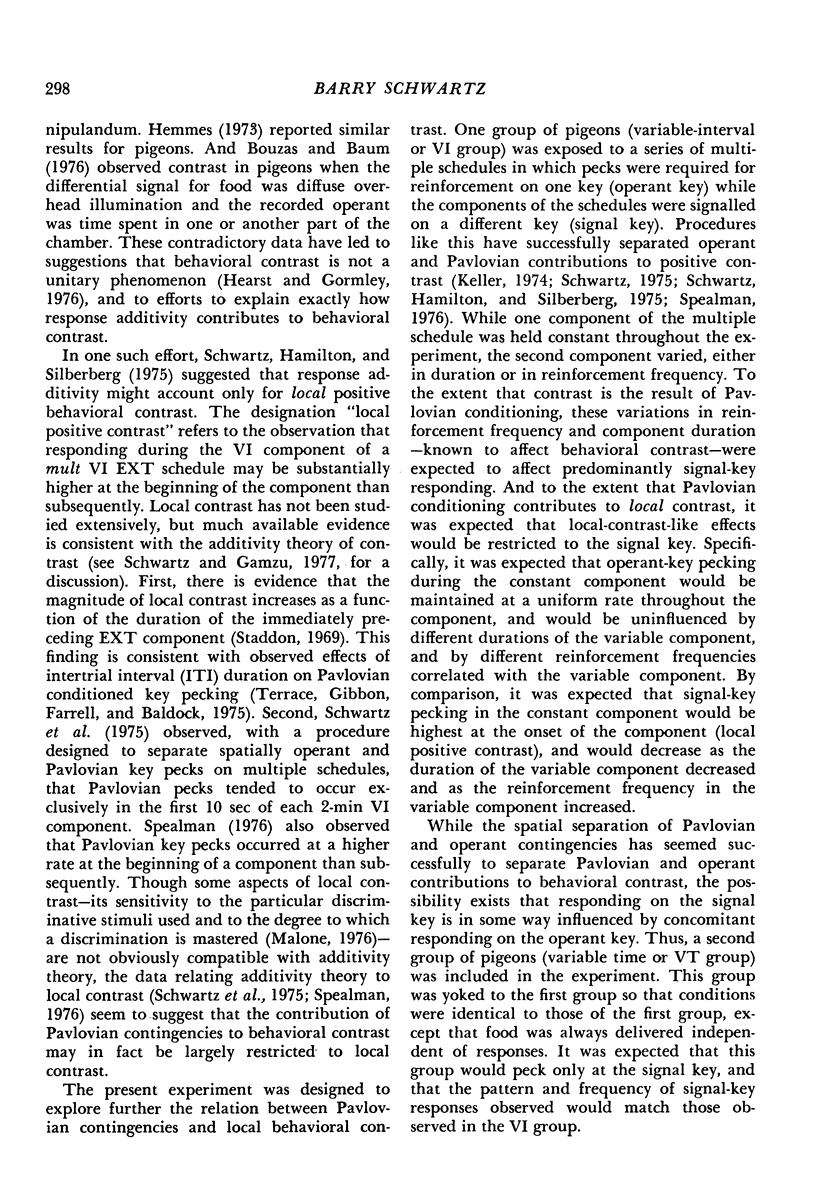
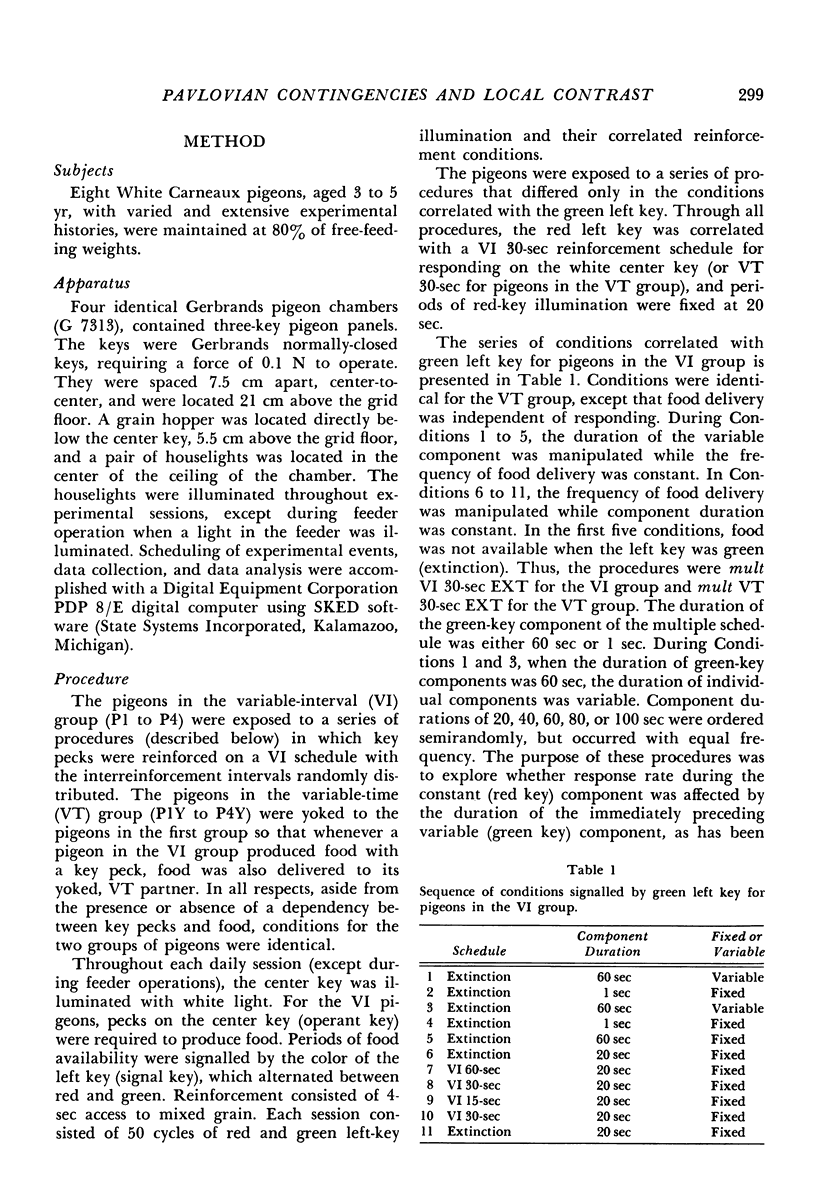
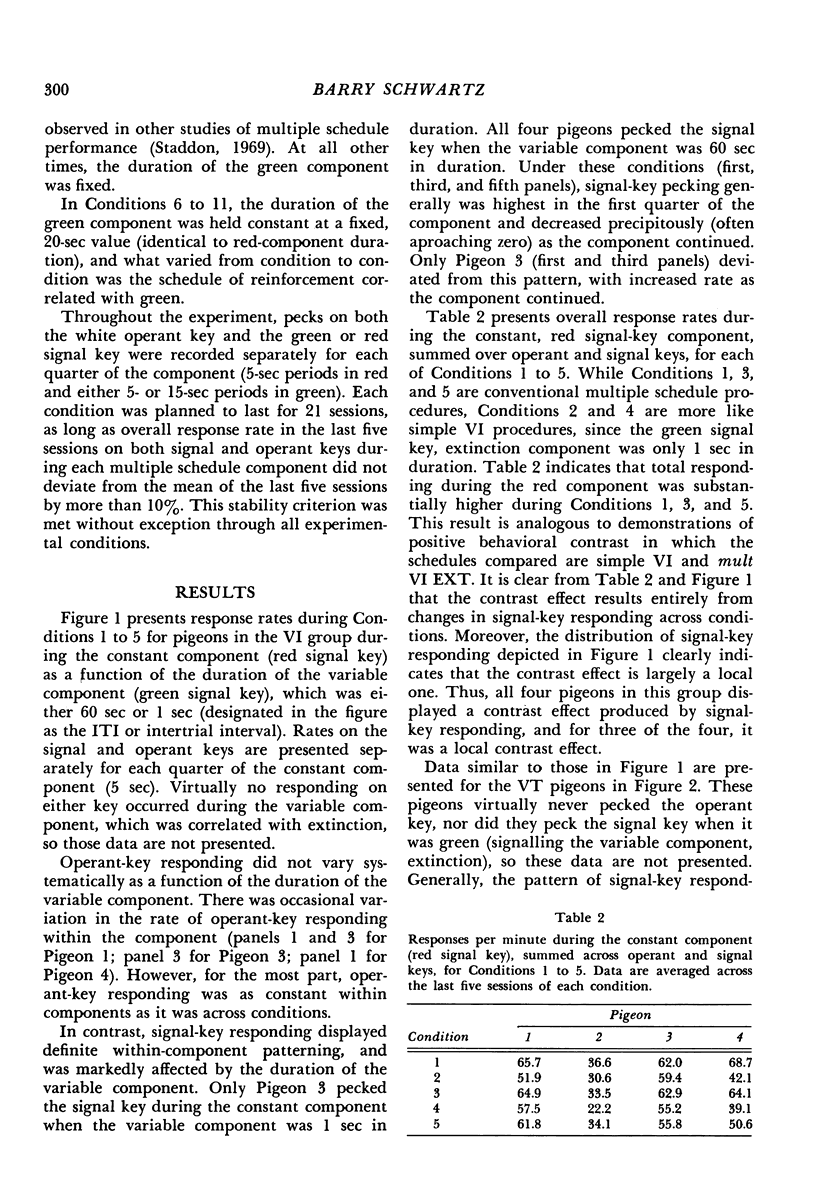
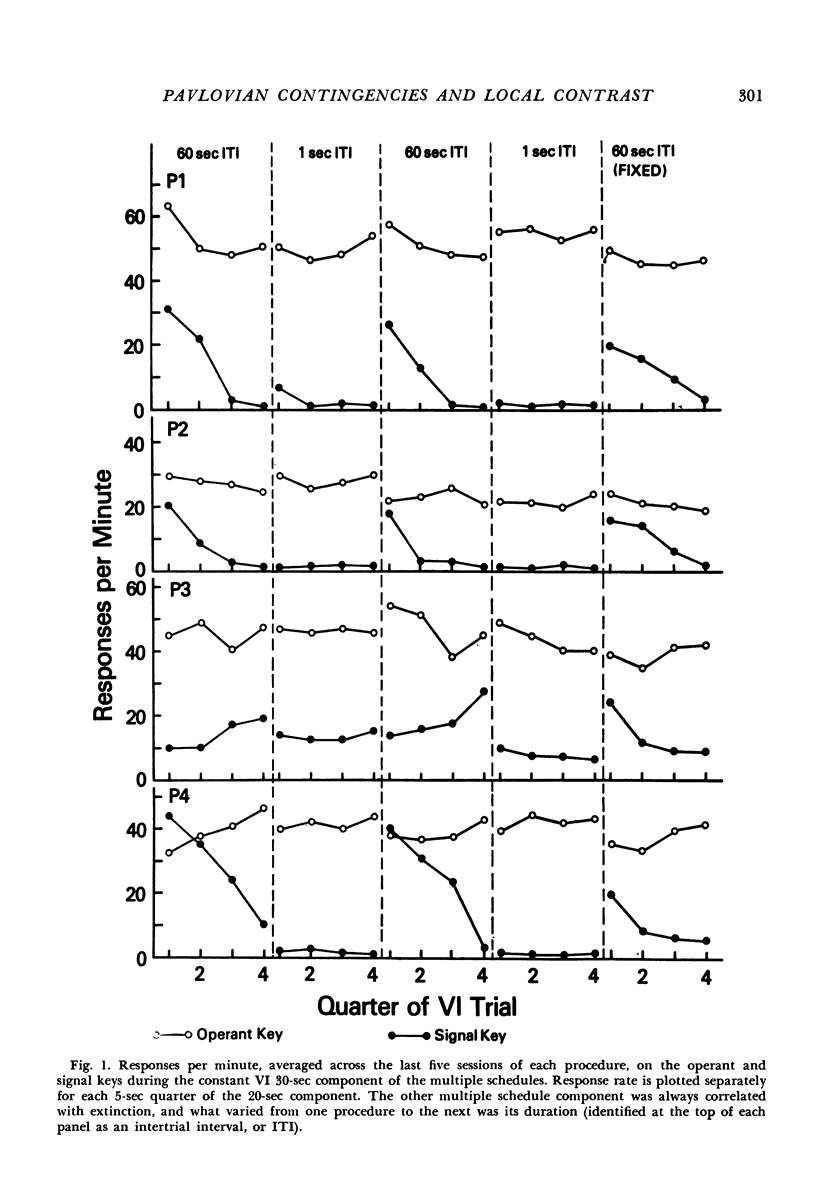
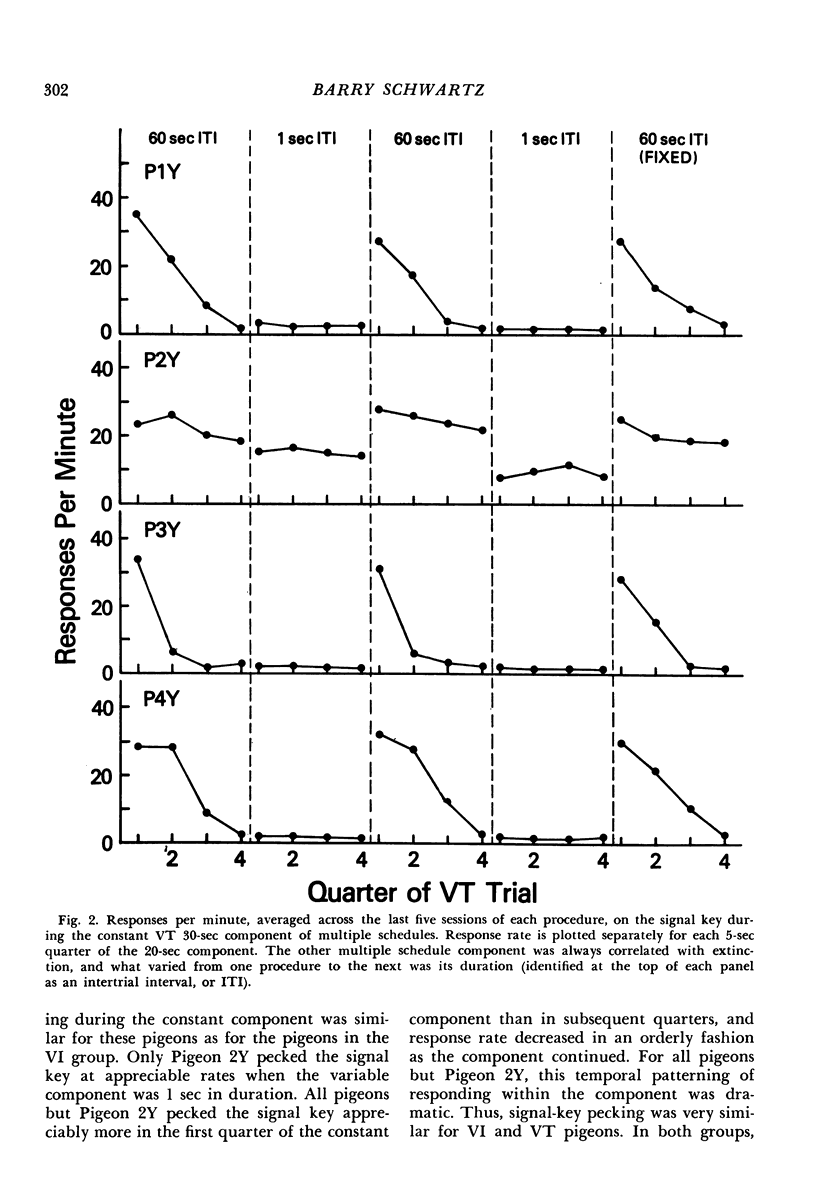

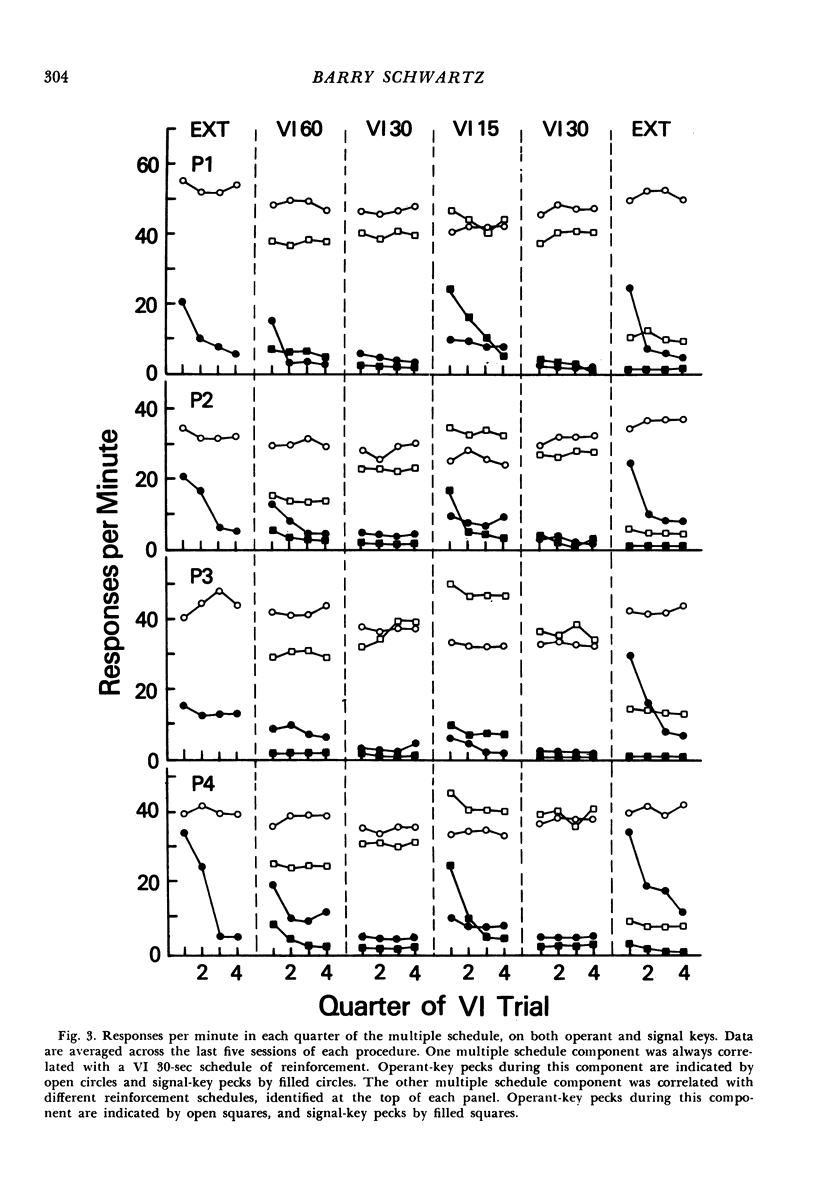
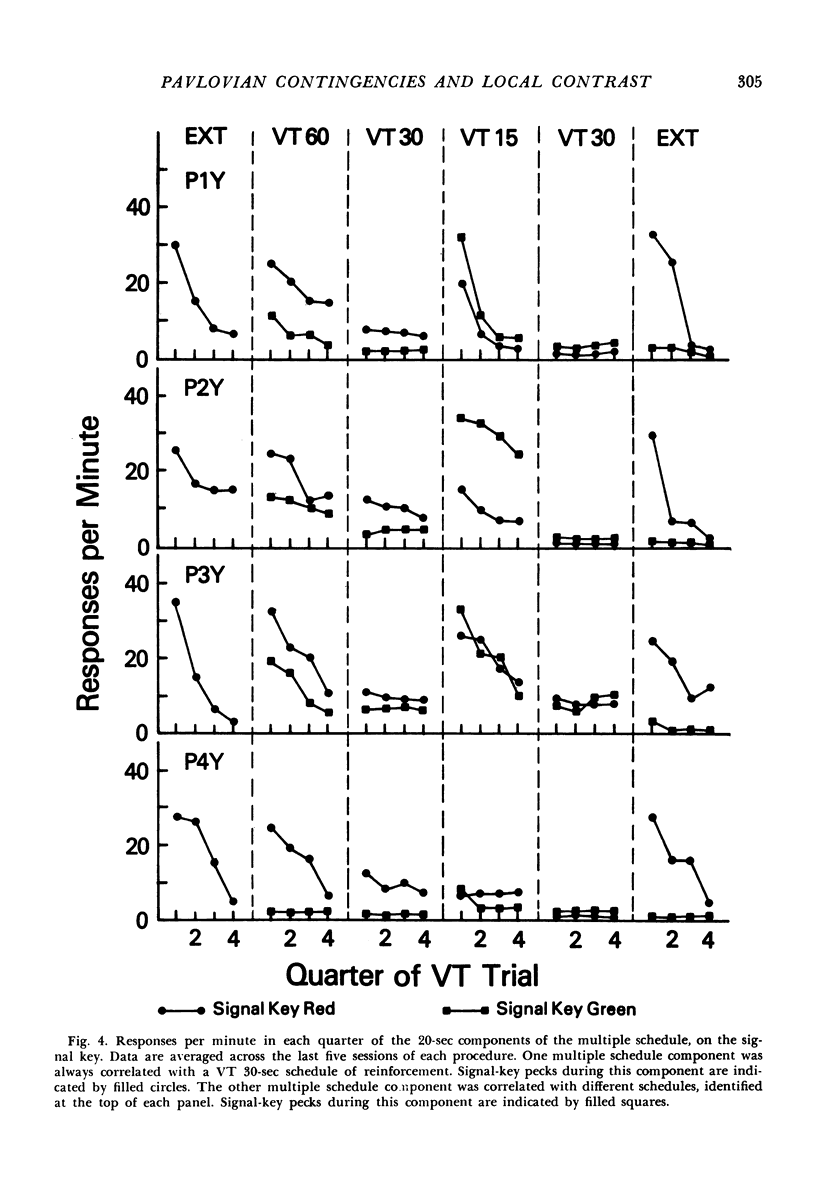
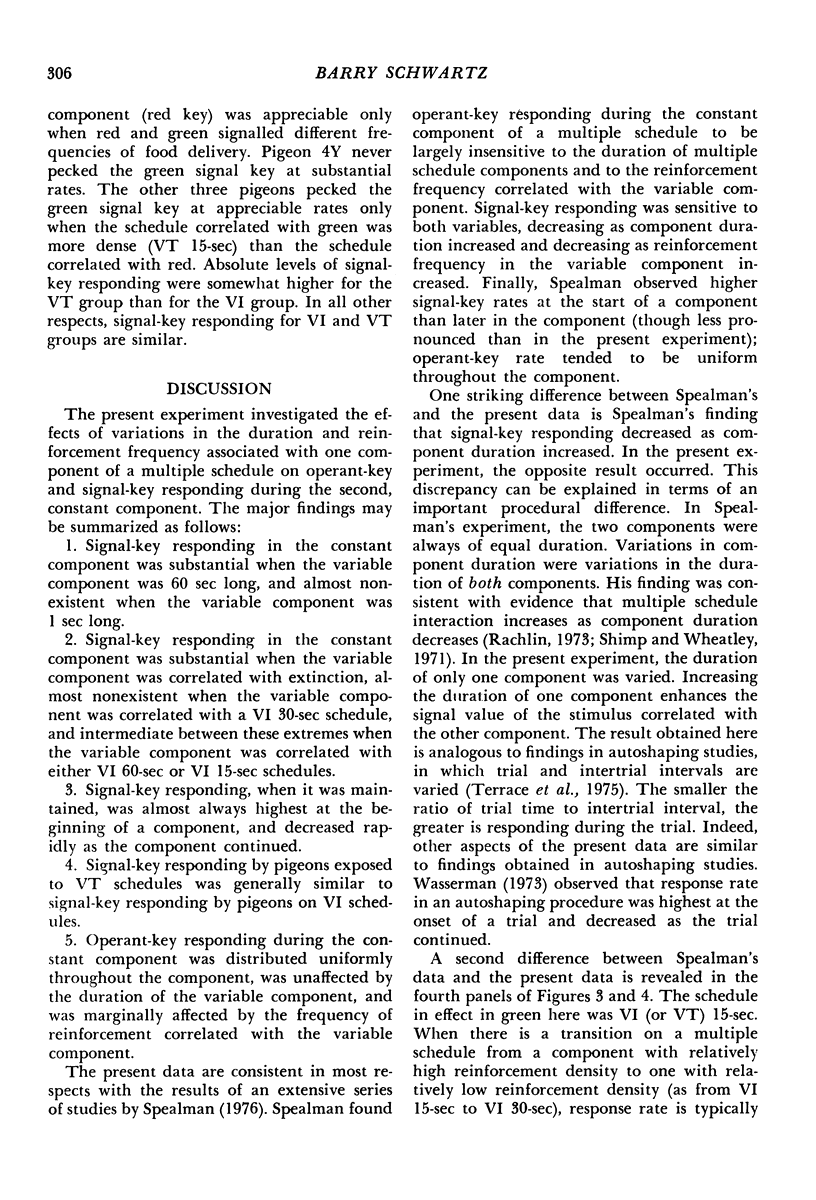
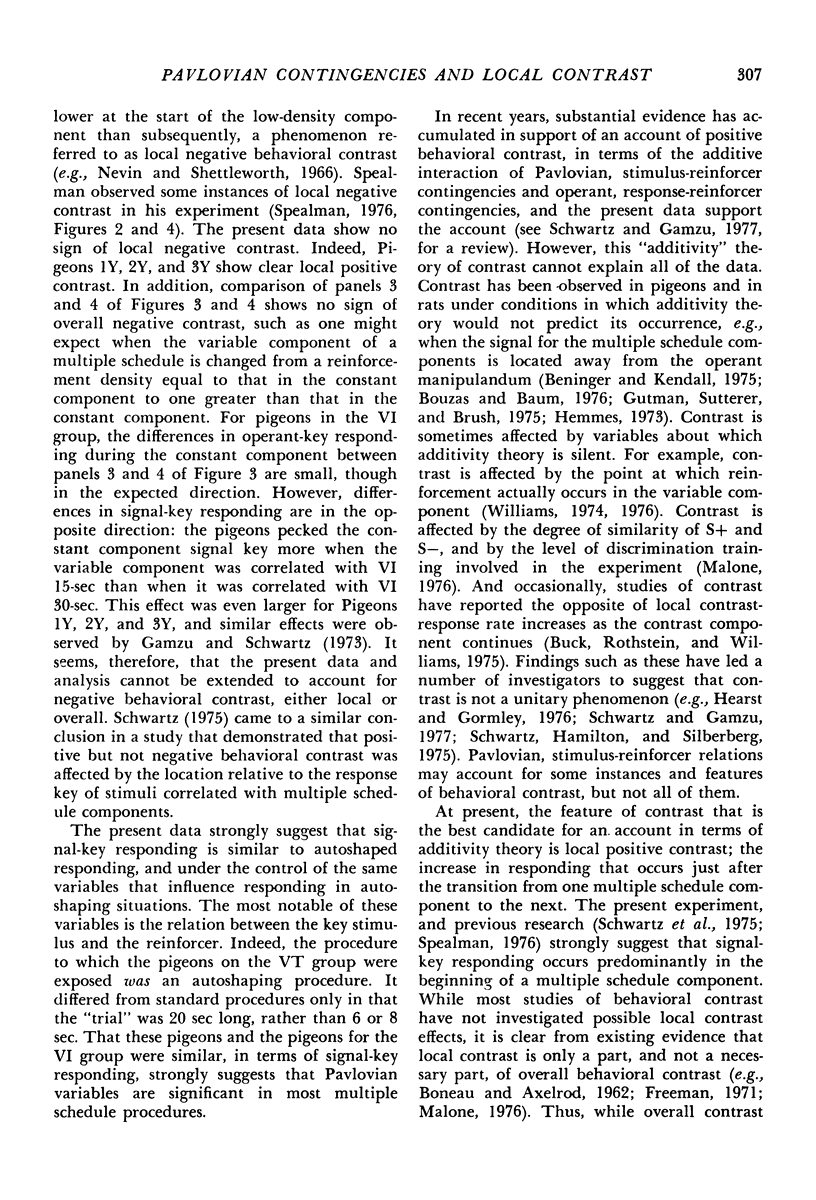
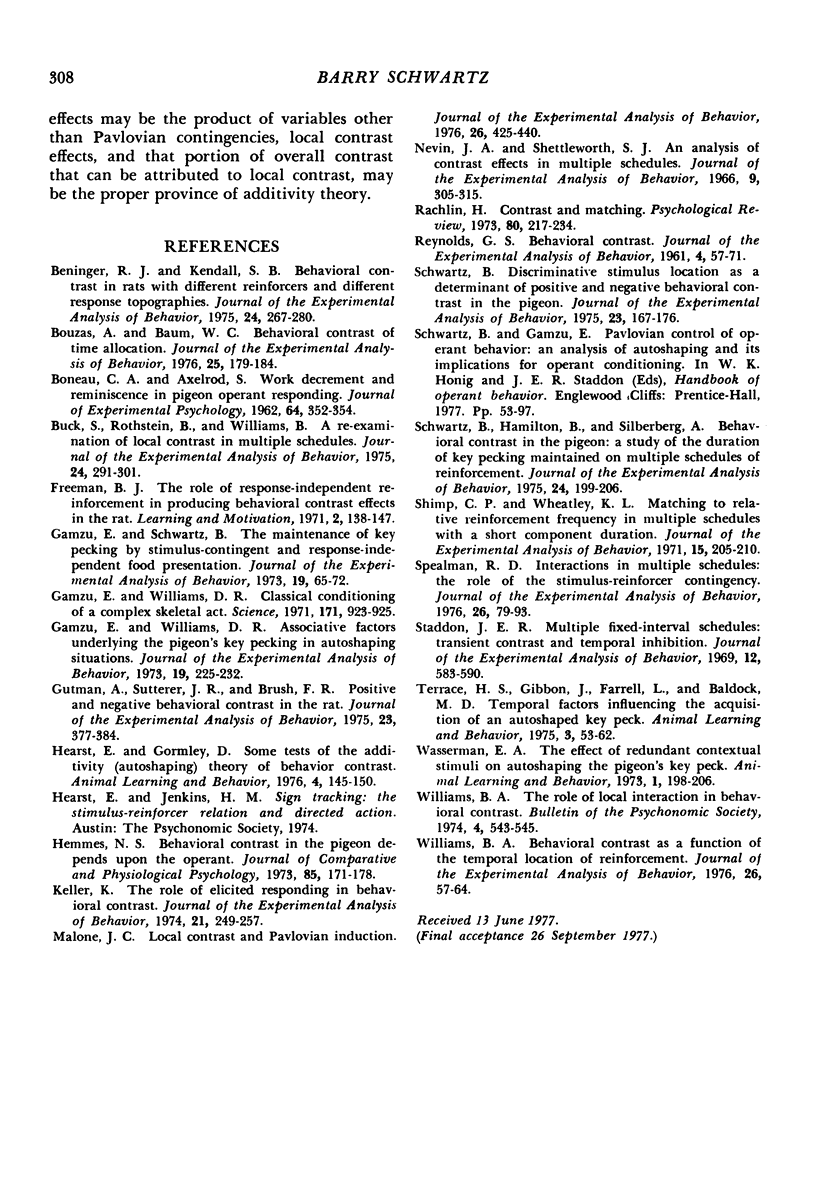
Selected References
These references are in PubMed. This may not be the complete list of references from this article.
- BONEAU C. A., AXELROD S. Work decrement and reminiscence in pigeon operant responding. J Exp Psychol. 1962 Oct;64:352–354. doi: 10.1037/h0047944. [DOI] [PubMed] [Google Scholar]
- Beninger R. J., Kendall S. B. Behavioral contrast in rats with different reinforcers and different response topographies. J Exp Anal Behav. 1975 Nov;24(3):267–280. doi: 10.1901/jeab.1975.24-267. [DOI] [PMC free article] [PubMed] [Google Scholar]
- Bouzas A., Baum W. M. Behavioral contrast of time allocation. J Exp Anal Behav. 1976 Mar;25(2):179–184. doi: 10.1901/jeab.1976.25-179. [DOI] [PMC free article] [PubMed] [Google Scholar]
- Buck S. L., Rothstein B., Williams B. A. A re-examination of local contrast in multiple schedules. J Exp Anal Behav. 1975 Nov;24(3):291–301. doi: 10.1901/jeab.1975.24-291. [DOI] [PMC free article] [PubMed] [Google Scholar]
- Gamzu E. R., Williams D. R. Associative factors underlying the pigeon's key pecking in auto-shaping procedures. J Exp Anal Behav. 1973 Mar;19(2):225–232. doi: 10.1901/jeab.1973.19-225. [DOI] [PMC free article] [PubMed] [Google Scholar]
- Gamzu E., Schwartz B. The maintenance of key pecking by stimulus-contingent and response-independent food presentation. J Exp Anal Behav. 1973 Jan;19(1):65–72. doi: 10.1901/jeab.1973.19-65. [DOI] [PMC free article] [PubMed] [Google Scholar]
- Gamzu E., Williams D. R. Classical conditioning of a complex skeletal response. Science. 1971 Mar 5;171(3974):923–925. doi: 10.1126/science.171.3974.923. [DOI] [PubMed] [Google Scholar]
- Gutman A., Sutterer J. R., Brush F. R. Positive and negative behavioral contrast in the rat. J Exp Anal Behav. 1975 May;23(3):377–383. doi: 10.1901/jeab.1975.23-377. [DOI] [PMC free article] [PubMed] [Google Scholar]
- Hearst E., Gormley D. Some tests of the additivity (autoshaping) theory of behavioral contrast. Anim Learn Behav. 1976 May;4(2):145–150. doi: 10.3758/bf03214025. [DOI] [PubMed] [Google Scholar]
- Hemmes N. S. Behavioral contrast in pigeons depends upon the operant. J Comp Physiol Psychol. 1973 Oct;85(1):171–178. doi: 10.1037/h0034883. [DOI] [PubMed] [Google Scholar]
- Keller K. The role of elicited responding in behavioral contrast. J Exp Anal Behav. 1974 Mar;21(2):249–257. doi: 10.1901/jeab.1974.21-249. [DOI] [PMC free article] [PubMed] [Google Scholar]
- Malone J. C. Local contrast and Pavlovian induction. J Exp Anal Behav. 1976 Nov;26(3):425–440. doi: 10.1901/jeab.1976.26-425. [DOI] [PMC free article] [PubMed] [Google Scholar]
- Nevin J. A., Shettleworth S. J. An analysis of contrast effects in multiple schedules. J Exp Anal Behav. 1966 Jul;9(4):305–315. doi: 10.1901/jeab.1966.9-305. [DOI] [PMC free article] [PubMed] [Google Scholar]
- REYNOLDS G. S. Behavioral contrast. J Exp Anal Behav. 1961 Jan;4:57–71. doi: 10.1901/jeab.1961.4-57. [DOI] [PMC free article] [PubMed] [Google Scholar]
- Schwartz B. Discriminative stimulus location as a determinant of positive and negative behavioral contrast in the pigeon. J Exp Anal Behav. 1975 Mar;23(2):167–176. doi: 10.1901/jeab.1975.23-167. [DOI] [PMC free article] [PubMed] [Google Scholar]
- Schwartz B., Hamilton B., Silberberg A. Behavioral contrast in the pigeon: a study of the duration of key pecking maintained on multiple schedules of reinforcement. J Exp Anal Behav. 1975 Sep;24(2):199–206. doi: 10.1901/jeab.1975.24-199. [DOI] [PMC free article] [PubMed] [Google Scholar]
- Shimp C. P., Wheatley K. L. Matching to relative reinforcement frequency in multiple schedules with a short component duration. J Exp Anal Behav. 1971 Mar;15(2):205–210. doi: 10.1901/jeab.1971.15-205. [DOI] [PMC free article] [PubMed] [Google Scholar]
- Spealman R. D. Interactions in multiple schedules: the role of the stimulus-reinforcer contingency. J Exp Anal Behav. 1976 Jul;26(1):79–93. doi: 10.1901/jeab.1976.26-79. [DOI] [PMC free article] [PubMed] [Google Scholar]
- Staddon J. E. Multiple fixed-interval schedules: transient contrast and temporal inhibition. J Exp Anal Behav. 1969 Jul;12(4):583–590. doi: 10.1901/jeab.1969.12-583. [DOI] [PMC free article] [PubMed] [Google Scholar]
- Williams B. A. Behavioral contrast as a function of the temporal location of reinforcement. J Exp Anal Behav. 1976 Jul;26(1):57–64. doi: 10.1901/jeab.1976.26-57. [DOI] [PMC free article] [PubMed] [Google Scholar]


